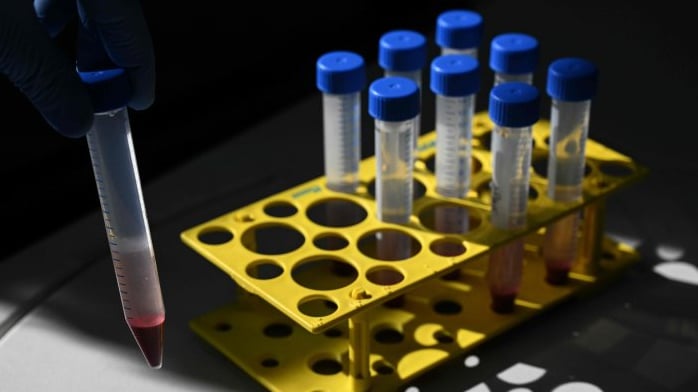What’s in today’s article:
- About IBDC
- News Summary
Why in news?
- The Union Ministry of Science and Technology recently dedicated to the nation India’s first digitised repository for life science data – Indian Biological Data Center (IBDC), at the Regional Centre of Biotechnology (RCB), Faridabad, Haryana.
- This will enable researchers to store biological data from publicly funded research, reducing their dependency on American and European data banks.
The Indian Biological Data Centre (IBDC):
- About IBDC:
- According to the Government of India’s BIOTECH-PRIDE guidelines, IBDC is mandated to archive all life science data (in digitised form) generated from publicly funded research in India.
- In India there is no specific guidelines for storage access and sharing of Biological data.
- The Biotech PRIDE Guidelines will facilitate this and enable exchange of information to promote research and innovation in different research groups across the country.
- These guidelines will be implemented through the Indian Biological Data Centre (IBDC) at Regional Centre for Biotechnology supported by the Department of Biotechnology.
- The data centre, which is India’s first national repository for life science data, is supported by the Department of Biotechnology (DBT) in collaboration with the National Informatics Centre (NIC), India.
- The digitised data will be stored on a four-petabyte (1 petabyte = 10,00,000 gigabytes (gb)) supercomputer called ‘Brahm’.
- The biobank also has a backup data ‘Disaster Recovery’ site at National Informatics Centre (NIC)-Bhubaneswar.
- The database offers open access (can be used by other researchers from across the country) and controlled access (data will not be openly shared for a number of years) mechanisms for data submission to researchers.
- According to the Government of India’s BIOTECH-PRIDE guidelines, IBDC is mandated to archive all life science data (in digitised form) generated from publicly funded research in India.
- Need:
- Currently, most Indian researchers rely on the European Molecular Biology Laboratory (EMBL) and the National Center for Biotechnology Information to store biological data.
- Other smaller datasets are available at some institutes, but they are not available to all.
- Objectives:
- Provide an IT platform for permanent archiving of biological data in India.
- Development of SOPs for storing and sharing the data as per FAIR (findability, accessibility, interoperability and reusability) principles.
- Perform quality control, data backup and management of data life cycle.
- Development of web-based tools, organisation of training programs on ‘Big’ data analysis and benefits of data sharing.
- Significance:
- Because of the heterogeneity of life scientific data, IBDC is being built in a decentralised manner, with various portions dealing with specific types of data.
- It would also provide infrastructure and expertise for biological data analysis, aiding in knowledge discovery of numerous genetic diseases, vaccines and medicines.
- As a result, it will always strive to meet the needs of not just the Indian, but also the global scientific community.
News Summary:
- The biobank now contains data including 200 human genomes sequenced as part of the ‘1,000 Genome Project,’ an international endeavour to map genetic variations in people.
- In addition, the database comprises the majority of the 2.6 lakh Sars-Cov-2 genomes sequenced by the Indian Sars-Cov-2 Genomic Consortium (INSACOG).
- The database will also house the 25,000 mycobacterium TB sequences, helping in understanding the spread of multi-drug and extremely drug resistant TB in the country and aiding in the search for targets for new medicines and vaccines.
- Currently, the database contains the genomic sequences of crops such as rice, onion, tomatoes, and mustard, among others.
- The presence of genomes from humans, animals and bacteria in the same database would also aid researchers in the study of zoonotic diseases (spread from animals to humans).
- It is probable that the database will later be expanded to store protein sequences (amino acids) as well as imaging data such as ultrasound and MRI images.
Last updated on June, 2025
→ UPSC Notification 2025 was released on 22nd January 2025.
→ UPSC Prelims Result 2025 is out now for the CSE held on 25 May 2025.
→ UPSC Prelims Question Paper 2025 and Unofficial Prelims Answer Key 2025 are available now.
→ UPSC Calendar 2026 is released on 15th May, 2025.
→ The UPSC Vacancy 2025 were released 1129, out of which 979 were for UPSC CSE and remaining 150 are for UPSC IFoS.
→ UPSC Mains 2025 will be conducted on 22nd August 2025.
→ UPSC Prelims 2026 will be conducted on 24th May, 2026 & UPSC Mains 2026 will be conducted on 21st August 2026.
→ The UPSC Selection Process is of 3 stages-Prelims, Mains and Interview.
→ UPSC Result 2024 is released with latest UPSC Marksheet 2024. Check Now!
→ UPSC Toppers List 2024 is released now. Shakti Dubey is UPSC AIR 1 2024 Topper.
→ Also check Best IAS Coaching in Delhi
























